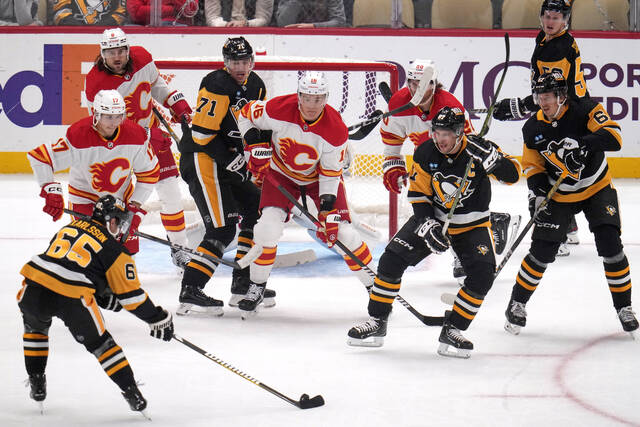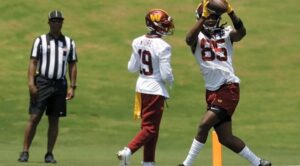
Following Marcus Pettersson’s overtime game-winning goal against the Montreal Canadiens on January 27, the atmosphere at PPG Paints Arena before the All-Star break was undeniably positive for the Pittsburgh Penguins. Despite a shootout loss to the Florida Panthers the night before, the Penguins managed to tie the game in the final minute of regulation, securing at least one point.
Reflecting on the win, Pettersson highlighted the boost it provided, stating, “It brings some juice and positivity into the break. It’s a real battle out there in the whole East(ern Conference). … Huge two points.”
Securing three out of four total points in the last two games before the All-Star break was significant for the Penguins, who are actively contending for a spot in the Eastern Conference playoffs, especially eyeing one of the two wild-card positions.
As the break commenced, the Penguins find themselves tied for fifth in the Metropolitan Division, trailing by seven points from the second wild card, currently held by Detroit.
During the break, the Penguins took the opportunity to rest and recharge before gearing up to strengthen their position in the standings, starting with a home game against Winnipeg on Tuesday.
A crucial factor influencing their future success will be the improvement of their power play, currently ranking second-to-last in the NHL with a 13.1% conversion rate. Debate and discussions about how to enhance the team’s 31st-ranked power play have been ongoing, from coach Mike Sullivan’s office to social media forums. Despite glimpses of success in mid-December and a four-game stretch in early January, the overall performance of the power play has been inconsistent and relatively ineffective throughout the season.
Recent games suggest that Coach Sullivan has been more open to experimenting with different player combinations on the ice for the Penguins. In the game against Florida, the power play got off to a quick start, with Jake Guentzel scoring in less than two minutes.
However, despite the early success, the team struggled to capitalize on seven subsequent power-play opportunities. In a strategic move during the final power-play attempt late in regulation, Sullivan made changes to the top unit by substituting Erik Karlsson and Evgeni Malkin with Valtteri Puustinen and Kris Letang.
Although this alteration did not result in a goal, Sullivan decided to maintain the new combination of Puustinen and Letang with Sidney Crosby, Jake Guentzel, and Bryan Rust in the game against the Canadiens. Meanwhile, the second power-play group consisted of Malkin, Karlsson, Lars Eller, Jeff Carter, and Rickard Rakell. This lineup adjustment reflects Sullivan’s willingness to shuffle the deck and explore different personnel groups in pursuit of an effective power play.
In that particular game, the power play went 0 for 2. Coach Sullivan acknowledged the need for decisions moving forward, stating, “As far as where it goes moving forward, we’re going to have to make decisions accordingly.” The decision to split the groups was made with the hope that the established lineup, which had been on the ice for an extended period, would gain traction, but success has been elusive.
Valtteri Puustinen was reassigned to Wilkes-Barre/Scranton last Sunday, leaving an open spot on the latest version of the top power-play unit. Regardless of Sullivan’s decisions post-break, the Penguins’ power play has been more of a liability than the anticipated source of strength this season. The team has faced challenges in converting power-play opportunities into goals, and despite various adjustments, finding consistency and success in this aspect of their game has proved to be a persistent challenge.








